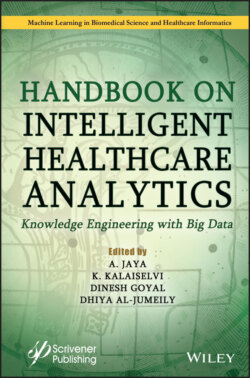Читать книгу Handbook on Intelligent Healthcare Analytics - Группа авторов - Страница 70
Electronic Medical Records and Electronic Health Records
ОглавлениеEMRs and EHRs are the most widespread sources for big data in healthcare. The EHRs consist of health status information and data of people in digital format. This health information will be distributed among the diverse healthcare professionals, doctors, and hospitals. The EHRs of patients can be used for improving the healthcare process and enable the healthcare professional to treat the patients well.
The EHR consists of following information about patients:
• Patient’s demographic information, medical history
• Billing data
• Insurance information
• Laboratory results
• Clinical information
• Medication records
• Medical imaging data
The EMRs contain data from a particular physician’s office. The EMRs are private and confidential documents. The EMRs contain treatment history of the patients in any physician’s office.
The difference between EHRs and EMRs are discussed in Table 3.3.
The main difference between EHR and EMR is that the EMR holds information of the patient’s history by one provider. The EHR goes ahead of the information from one provider and contains wide-ranging patients’ history, which can be shared between all providers.
Table 3.3 Difference between electronic health record and electronic medical record.
| Electronic health records | Electronic medical records |
| All the patients’ health information in digital form. | The patient health information form one physician’s office in digital form. |
| Electronic health records are shared among medical professionals. | Electronic medical records are private and confidential documents. |
| Electronic health records are used by many numbers of providers for the diagnosis and for the better treatment. | Electronic medical records are used by one provider for the patient’s treatment. |
The EHR provides enormous data that enable doctors for better clinical decisions with advanced analytics.
Apart from IoT and EHR, the other sources of big data, in healthcare are as follows:
• Insurance data
• Other clinical data
• Healthcare-related research studies data
• Social media and search engine data
All these medical related data exist in many forms: laboratory results, the physician’s clinical notes, the medical images, the sensor data, etc. There is no standard form for all these sources of medical data. The medical data is large in volume, of structured and unstructured data.
Structured data: Structured data means the information accumulated and presented in an organized way. Examples of the structured health data are height, weight and BP, blood group, and stages of a disease diagnosis [5, 8].
Unstructured data: Unstructured data is the data that is not organized with any standard format. Examples of the unstructured health data are the doctor’s clinical notes, images, and the search engine data. The main problem of big data in healthcare fields is that around 80% of the healthcare data are in unstructured form [9]. Deep learning, artificial intelligence, cloud computing, data mining, machine learning algorithms, text analysis, and natural language processing tools are used for transforming the unstructured data into a meaningful knowledge insight. Table 3.4 summarizes the different sources of healthcare data.
